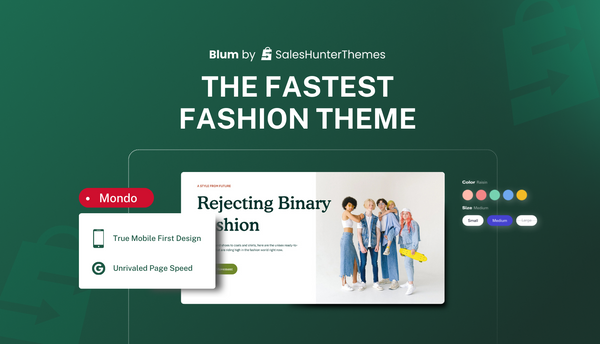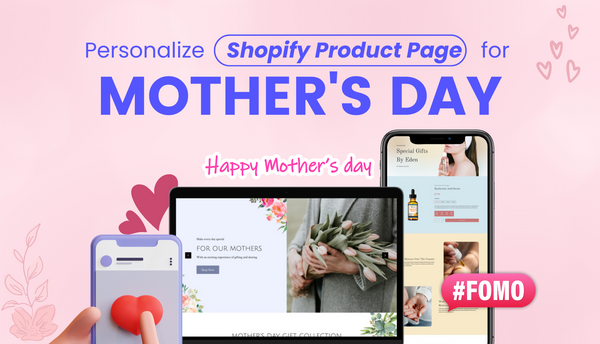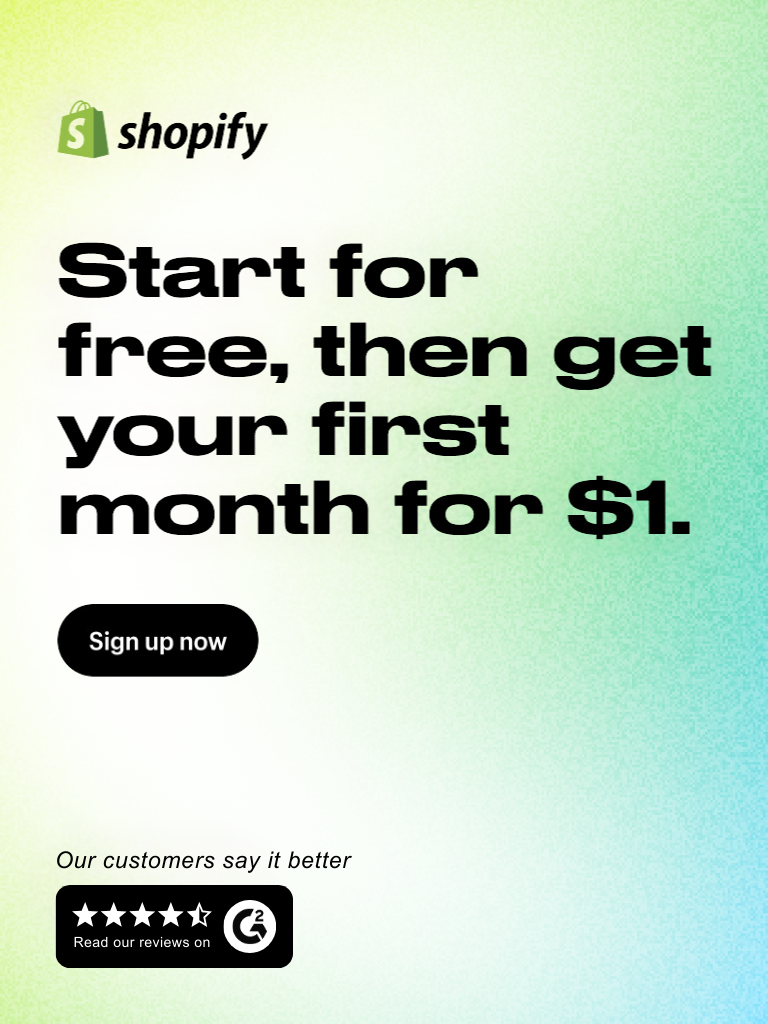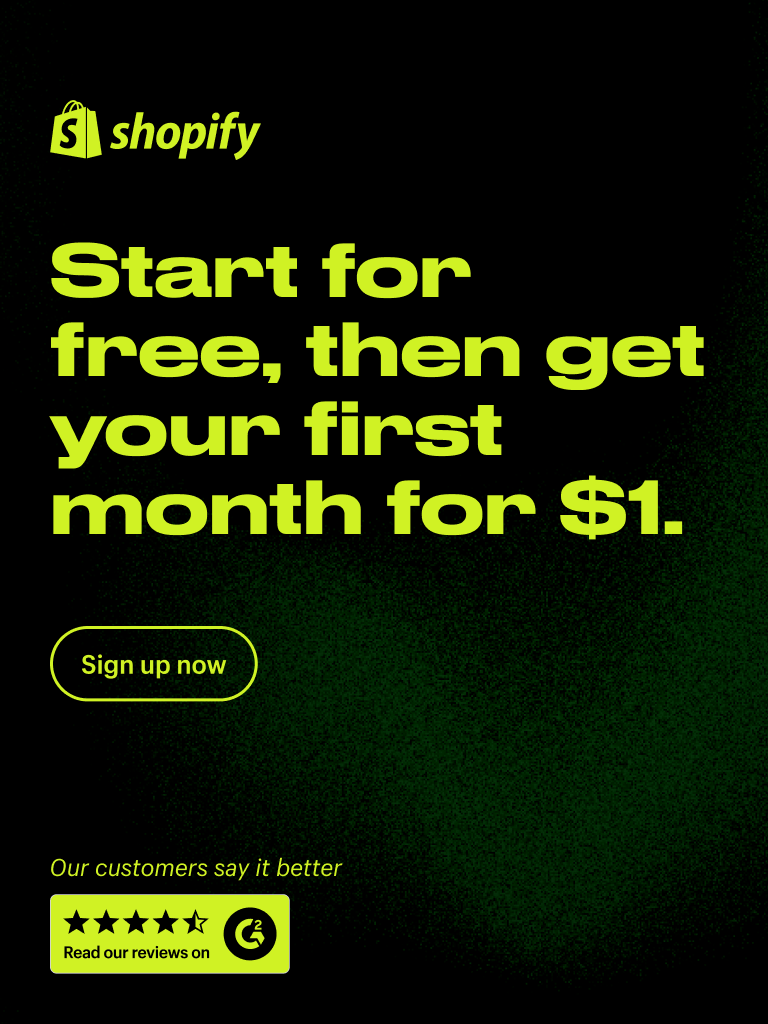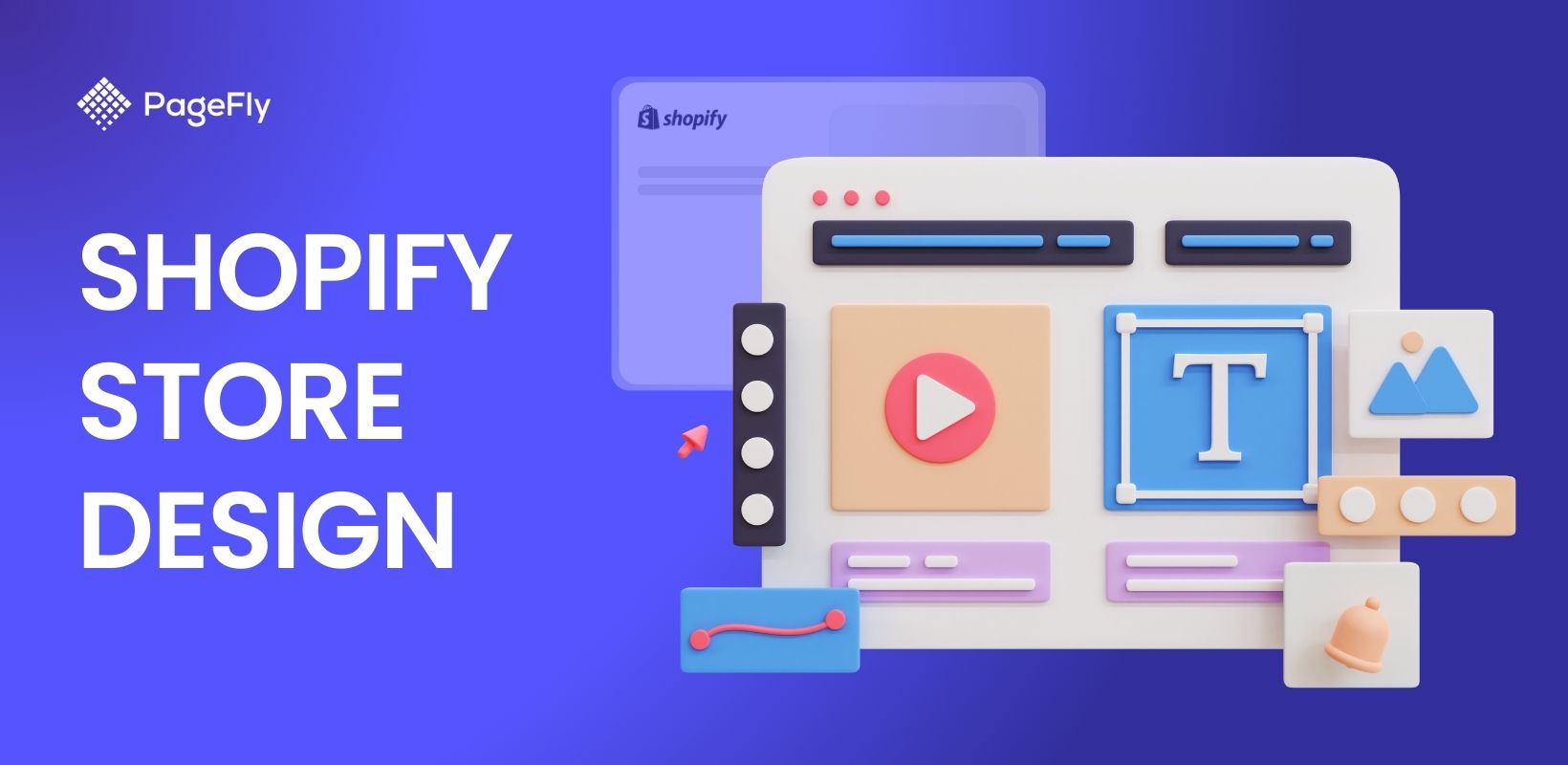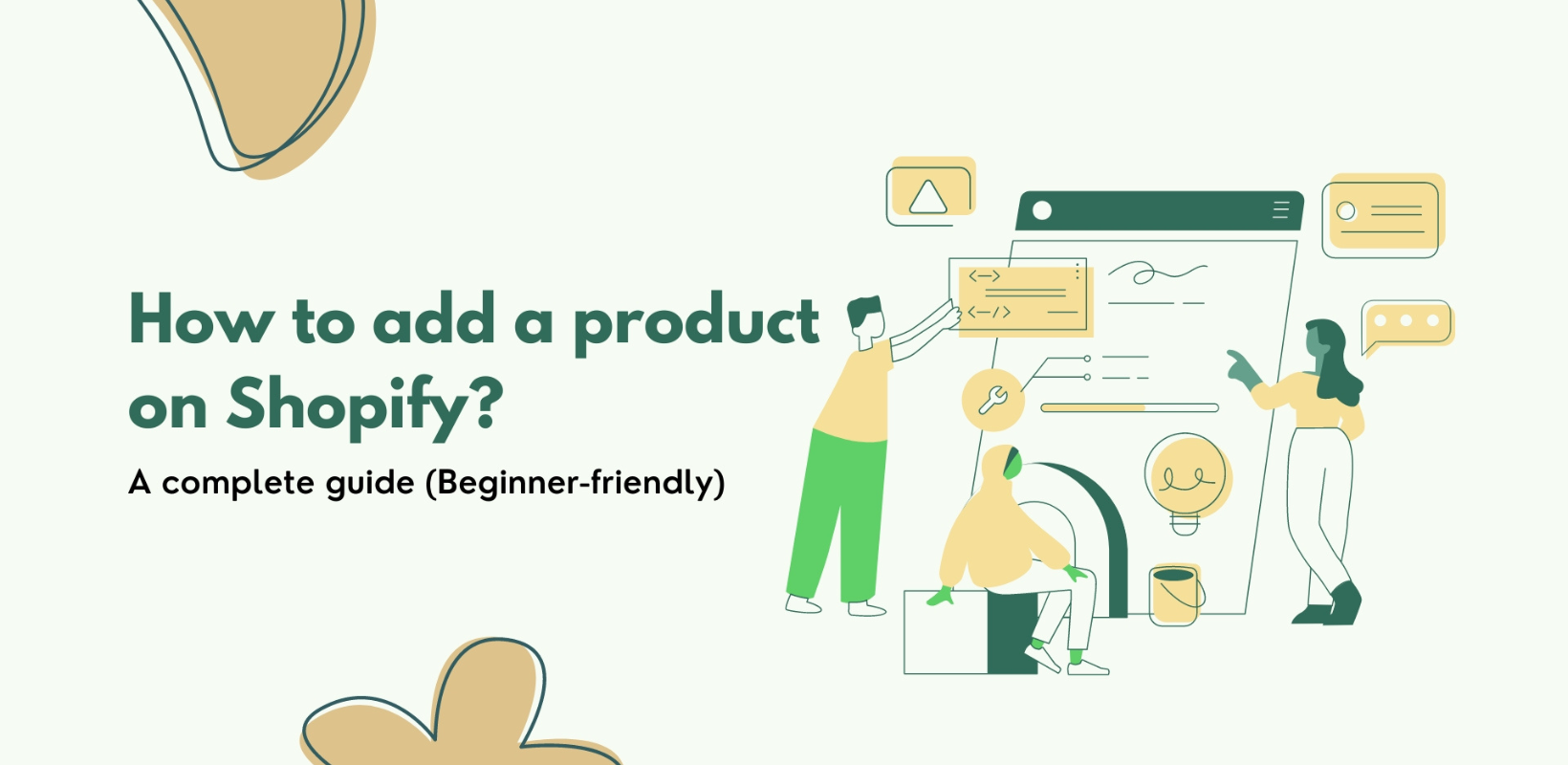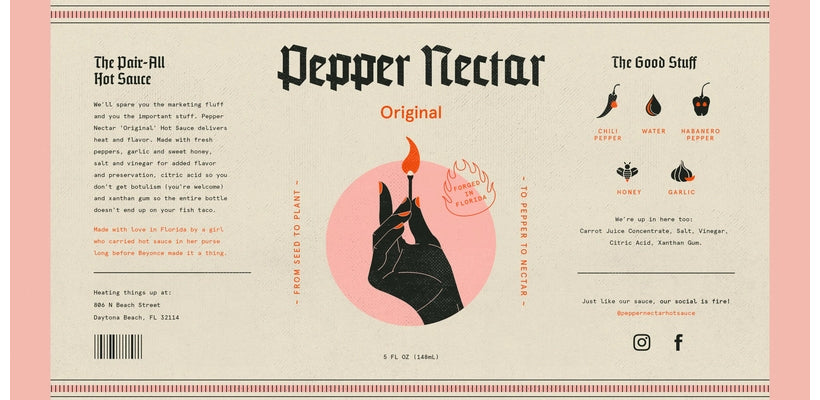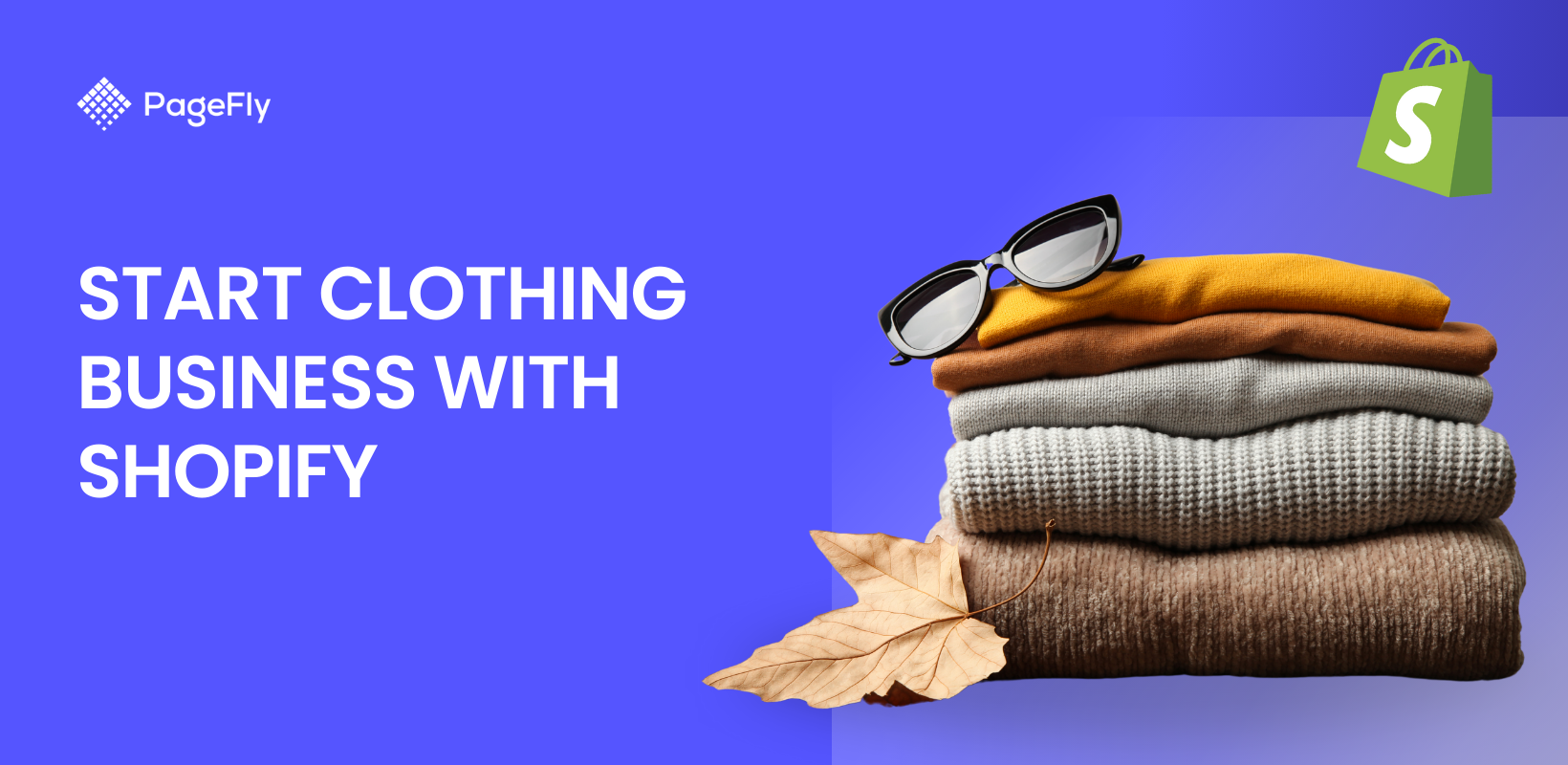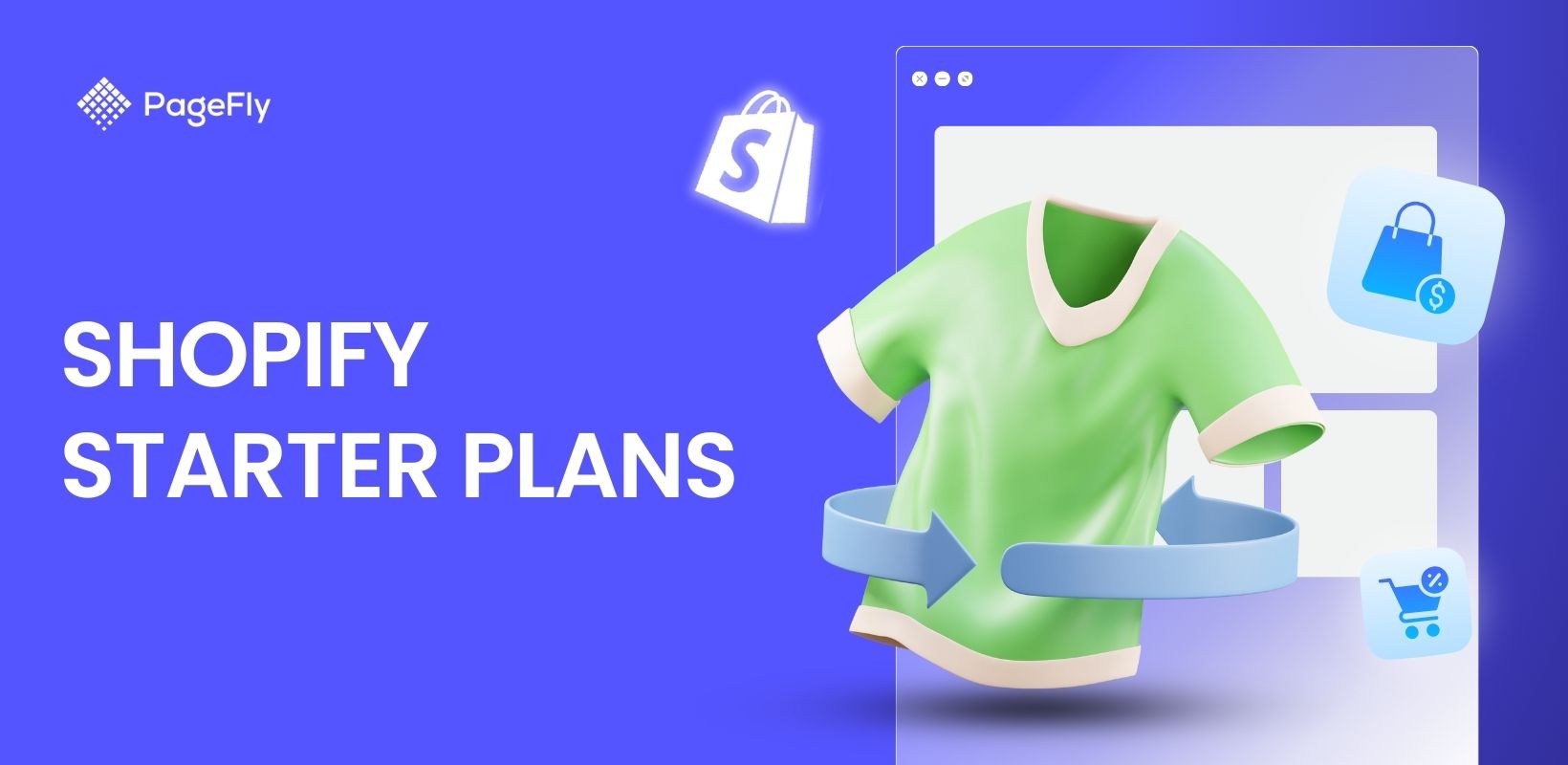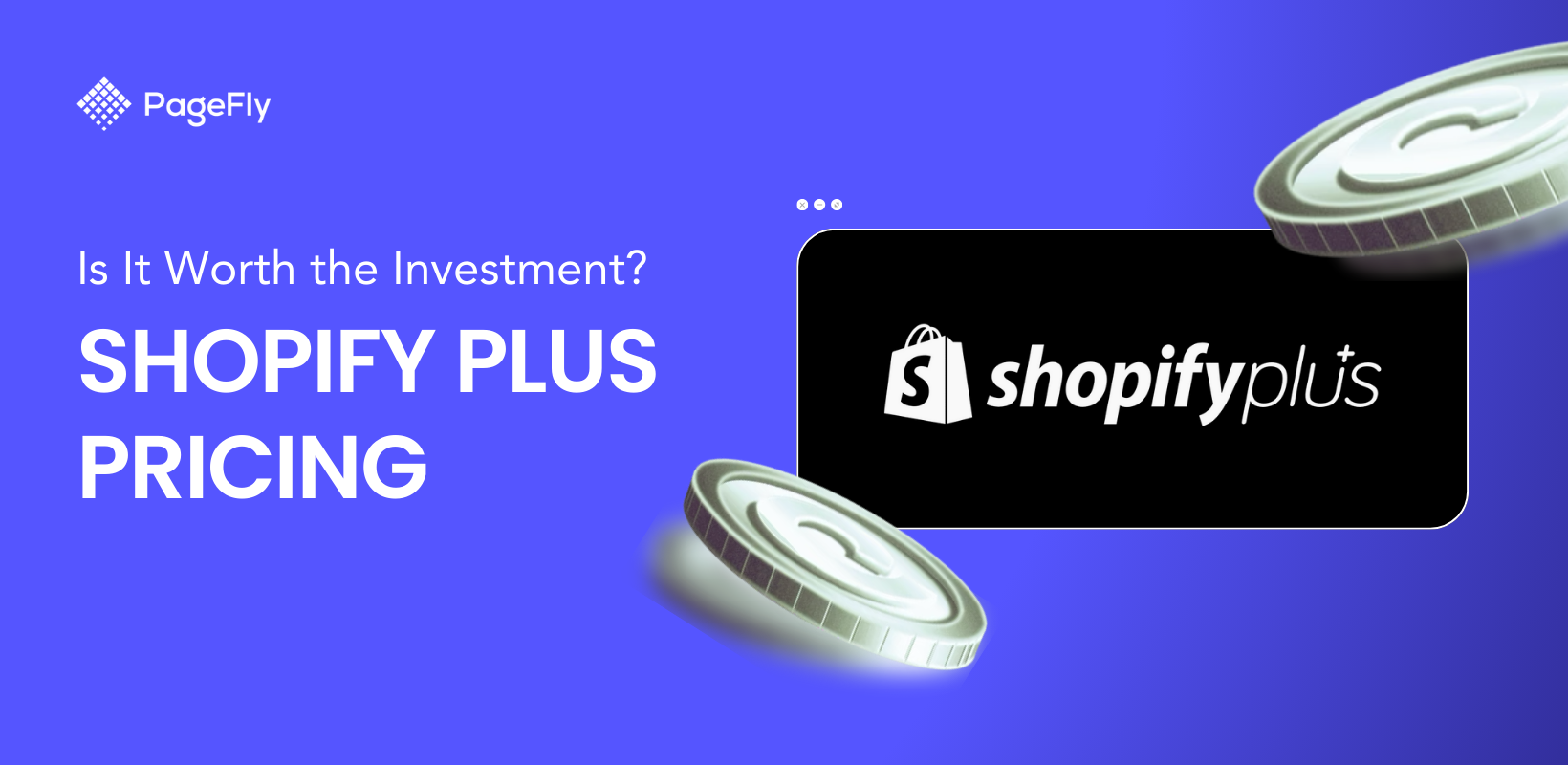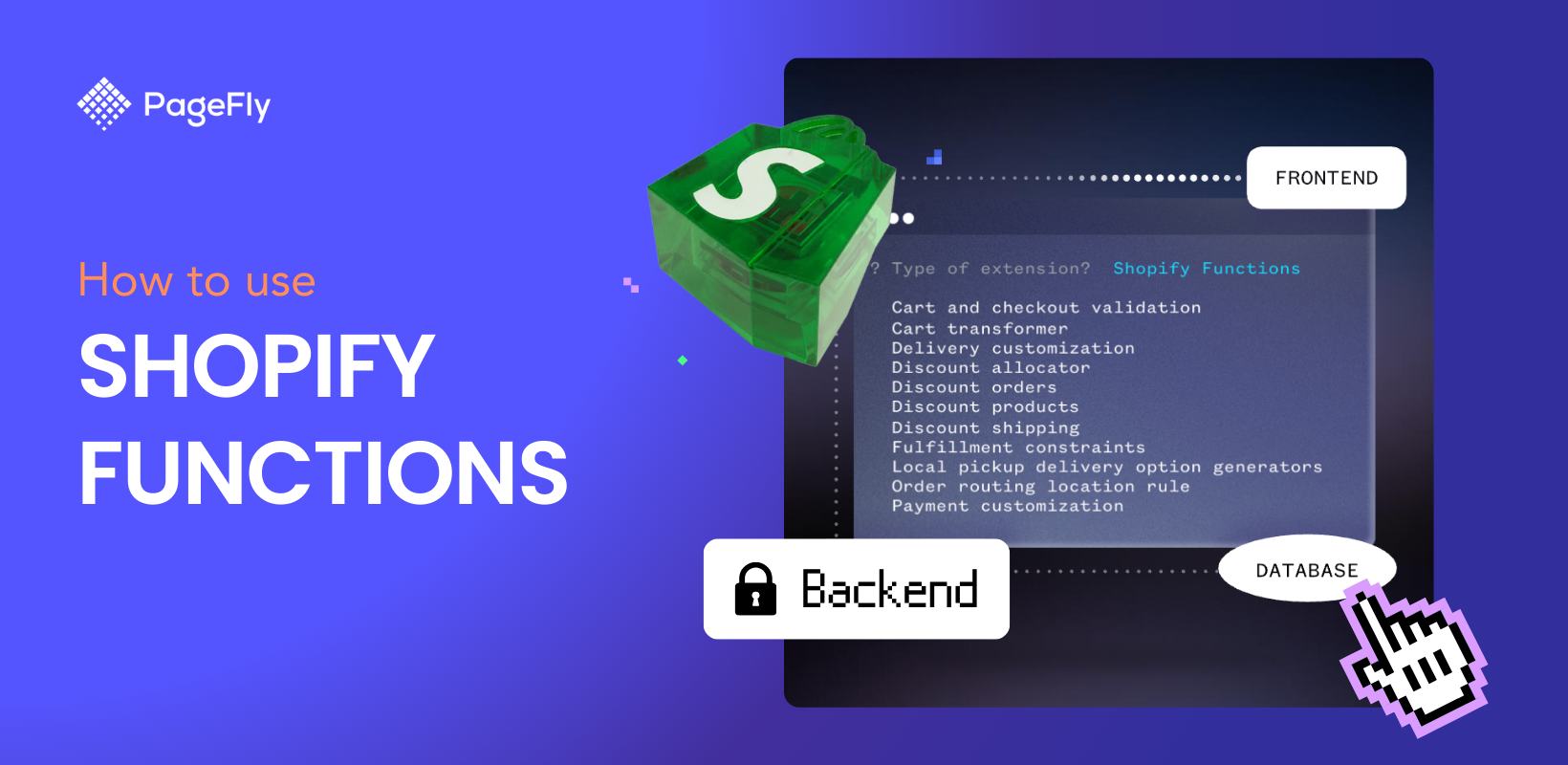The success of any online business depends on set goals and approaches towards achieving them; and while some may be well-defined, others may not be. However, it is crucial to be precise about the measures you need to achieve your goals.
One important goal to focus on is how to enhance customer relationships and improve revenue. To improve this, you’ll need to increase your Average Order Value (AOV). AOV shows you the average amount a customer spends per order and a company's financial health status.
In this guide, we’ll highlight the importance of AOV, benefits and effective strategies to improve your average order value on Shopify.
Outline
- Understanding Average Order Value
- What is the Average Order Value?
- Comparing Your Average Order Value With Other Shopify Stores
- Benefits of Improving Your Shopify Average Order Value
- 8 Tips to Improve Average Order Value in Shopify
- Combining Average Order Value (AOV) With Other Metrics
- Frequently Asked Questions on Average Order Value
- Conclusion
Understanding Average Order Value
Before we define Average Order Value (AOV), let’s give an explanation of AOV using your Shopify store.
So, looking at your store's weekly performance, you made some notable observations on the site; first an increase in impressions and a corresponding increase in site traffic. Despite the increased traffic, your sales and order value remain relatively low, though the store has been redesigned and remodeled, it didn’t have any positive impact on sales. This signifies that more often than not, huge site traffic does not equal huge sales.
Understanding your order value is the first step to improving your profits and revenue. Now, what exactly is the Average Order Value?
What is the Average Order Value?
Your store’s Average Order Value signifies three things about your customers: their spend per order, their purchasing power, and their shopping preferences. The AOV measures the average number of orders completed in a given timeline.
On any given day, two buyers in your store can look around for ten minutes before placing their order, yet the cost of items purchased are widely different. A higher AOV would then suggest that they’re spending more, buying more high-priced items.
Why does this knowledge matter? One, it impacts your periodic bottom line. Two, you can track sales performance and predict buyers’ buying habits.
Asides measuring profit margins, you can tailor your purchases and inventories to fit your customers’ preferences. You can also set up product recommendations and campaigns to either stir them to buy more similar products or to consider quality alternatives.
Below, we highlight how to calculate your store’s average order value.
How To Calculate Average Order Value
To calculate the average order value, divide the total revenue by the total number of orders within a specific time frame.

Let’s say, your store generated a total revenue of $8000 from 200 orders, your average order value is $40. That is, excluding the marketing cost, an average customer spends $40 per order.
In essence, your AOV is calculated based on the number of orders rather than the number of customers you have in your store. Multiple orders from customers will be tallied to the respective AOV at any given time.
Why is AOV Important?
AOV is important because a low average order signifies a dip in the number of customers' orders and a decrease in ROI. To increase sales, you may want to reduce prices to gain customers’ trust, make them comfortable and encourage them to place more orders.
AOV should be closely monitored and measured over frequent periods. When there is a significant rise or fall in sales, every part of the business should be monitored to understand the cause of the changes.
Changes due to new campaigns, product introductions, brand redesign, unavailability of high-demand goods seasons or alterations on the website can affect AOV.
When evaluating your AOV, there are two metrics to consider:
Lifetime Revenue of a Visitor
This is the total value of a customer over time. Understanding the revenue each customer brings lets you effectively calculate how much they spend buying from you.
Let’s say, you have a customer that averages 75 orders weekly or monthly. While evaluating AOV, if you observe a 12% drop in orders, you know this will impact your AOV and overall sales. You can then quickly fix a store promotion or introduce incentives to get the order value up.
Cost Per Conversion
This is the cost of converting a visitor to buying a customer. It should be subtracted from the average order value to show the actual profit per order.
Coupled with the conversion rate and site traffic (clicks, not just impressions), the average order value is used to calculate the overall site revenue:
Total Revenue = Site traffic x Cost per conversion x Average order value
Comparing Your Average Order Value With Other Shopify Stores
Comparing your average order with other Shopify stores may seem like a good business decision. While this has its appeals, it is a path you need to tread carefully especially when comparing your AOV as a whole figure.
Why’s that?
AOV varies based on the business size, and how you price your products. Higher-priced products will naturally give you a higher AOV, and lower-priced products will produce lower AOV.
Therefore, comparing your store with other Shopify stores within the lower spectrum will give you a false sense of security and will hinder you from improving your AOV as you should.
Likewise comparing your store with those on the higher spectrum will give you unnecessary worries and make you feel like your best is lacking which is not fact.
The best you can do is to compare your AOV to your store at different times or for different areas such as customer or product sections. This will give you detailed results and data on the best-performing segments and areas that need more attention to help improve AOV.
Benefits of Improving Your Shopify Average Order Value
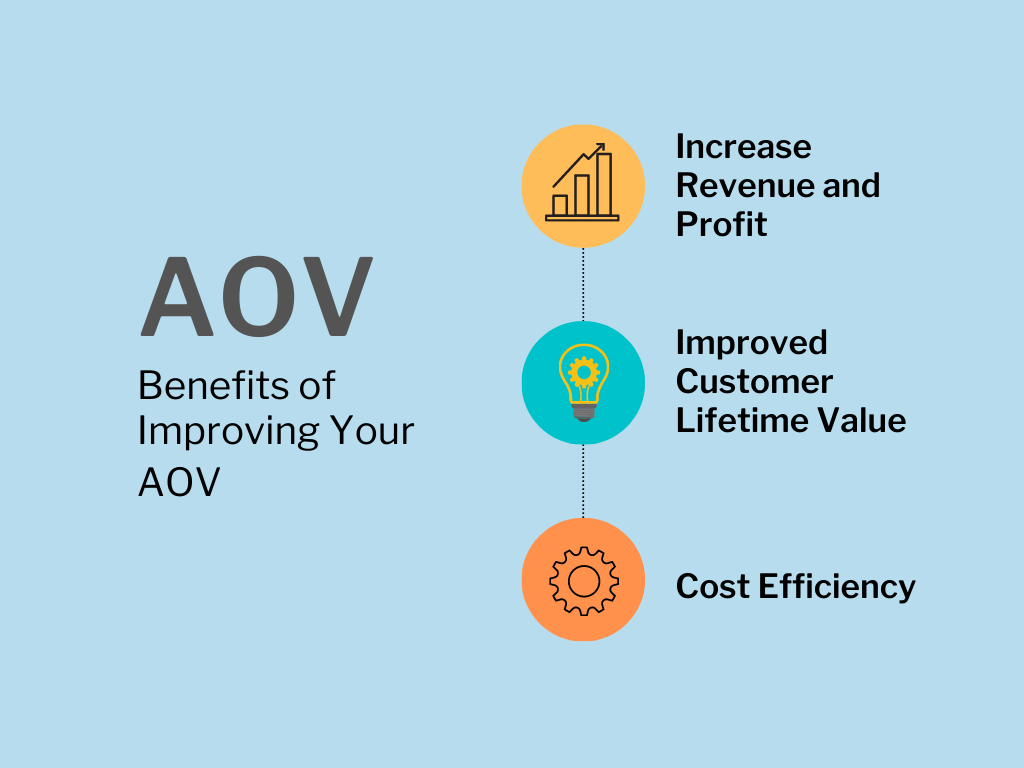
With the right application of AOV, you can increase your quarterly gains, improve your buyers’ lifetime value, and reduce cost per acquisition. AOV isn’t just another metric to add to your vocabulary. It’s a game changer for stellar economic performance.
- Increase in Gains: To earn more, sell more. To sell more, encourage your customers to spend more. Knowing your store’s AOV will spur you to implement strategies that keep your buyers longer in your store. You’ll figure out how to increase the volume of purchases without appearing sale-sy.
- Improved Customer Lifetime Value (CLV): Higher AOVs indicate that over extended periods, your customers offer more value to your store. Hence, you can invest in retention strategies - loyalty programs, bonuses, and discounts - to foster long-term customer relationships.
- Cost Effectiveness: AOV caters to optimizing the revenue from existing customers. Arguably, it costs more to acquire a new customer than it does to retain an existing one. Increasing the value of an existing customer saves extra dollars spent on acquisition.
8 Tips to Improve Average Order Value in Shopify
There are many ways to improve your Average Order Value. Below, we’ll discuss 7 strategies to improve AOV for your Shopify store.
1. Upselling and Cross-selling
Cross-selling in eCommerce means suggesting related or complimentary products to the existing products already purchased.
Upselling means recommending higher or premium versions of the purchased product to the customers with the impression that it better meets their needs.
When you implement effective upselling and cross-selling techniques, you encourage customers to add more items to their cart or upgrade to higher-priced products.
Similarly, offer relevant product recommendations based on their browsing and purchase history, both during the checkout process and on the product pages.
For example, match your promoted outfits with accessories you feel your customers will like and recommend those accessories to them. They will likely buy them together as a one-piece which in turn increases your sales.

Image Source: Pexels.
2. Bundle and Volume Discounts
Create product bundles or offer volume discounts to incentivize customers to purchase more in a single transaction. These bundles can consist of frequently bought-together items or a mix of high-end products and fast-selling items.
So instead of selling, say, a male jogger for $200, a shirt for $100 and sneakers for $300, you can bundle them and sell them for $540, offering a 10% discount on sales. These kinds of offers are irresistible.
Promote these offers prominently on your Shopify Store and highlight the value customers can obtain by taking advantage of these deals.
3. Free Shipping Threshold
Set a minimum order value for free shipping and display the progress bar showing customers how close they are to reaching it.
Given this 2023 report, 60% of American consumers expect free shipping on all online orders. 80% have the same expectations but are willing to purchase an amount of product to get it.
This technique motivates customers to add more items to their cart to qualify for free shipping, increasing their AOV.
However, you need to inform them about your free shipping policy through the free shipping bar displayed on your website which is often in the form of sticky or floating bars.
4. Personalized Product Recommendations
Utilize data from customer profiles, purchase history, and browsing behavior to provide personalized product recommendations.
Use Shopify apps or built-in features like Shopify’s recommendation engine to display related or complementary products that align with the customer’s interests, increasing the chances of upselling.
5. Tiered Pricing and Quantity Breaks
Tiered pricing is a strategy used to present customers with various product options with corresponding price levels.
Implement tiered pricing or quantity-based discounts to incentivize customers to buy more.
To structure your tiered pricing, list out all the items you want to offer. Categorize them according to their value, from the least to the most desired together, with the resources they require. Next is to organize them into groups for your customers.
Display the discounts prominently on product pages. Emphasize how much customers can save when they purchase larger quantities or a collection of specific products.
You may not immediately track the effects of this strategy. However, if you consistently appeal to your buyers’ purchasing power, you’d inspire them to eventually increase their order size.
6. Exit-intent Popups

Exit-intent popups are shown to a customer once he or she decides to leave your site.
These ads can be used to increase your average order size depending on how you display them.
Customers might decide to leave your site because it doesn’t offer free shipping or because the prices are too high. By giving users a chance to get a discount or enjoy free shipping, you can push them to stay on your site and make a purchase, eventually spending more than they originally intended to spend.
7. Post-Purchase Upselling
Leverage post-purchase opportunities by displaying relevant upsell offers on the order confirmation page or through follow-up emails. Offer complementary products or accessories that enhance the customer’s initial purchase, providing them with additional value.
8. Loyalty and Reward Programs
Implement a loyalty program to reward customers for their repeat purchases. Offer exclusive discounts, early access to sales, or points-based systems that can be redeemed for future purchases.
By increasing customer loyalty, you can drive higher AOV as customers strive to unlock more rewards.
Combining Average Order Value (AOV) With Other Metrics
No doubt Average Order Value is essential, however, combining it with other metrics makes it more powerful.
We’ll look at why combining AOV with other metrics can provide a more comprehensive analysis of your business and drive data-driven decision-making.
A. Customer Lifetime Value
Customer Lifetime Value assesses the long-term value of a customer by estimating how much revenue they will generate throughout their relationship with your brand. Therefore, combining AOV with CLV can help you understand not only how much customers spend per order (their frequency of purchase) but also their potential lifetime value.
Remember:
Customer Lifetime Value (CLV) = Average Order Value x Frequency x Lifetime Value
B. Conversion Rate
Conversion rate measures the percentage of visitors to your website who make a purchase. By comparing AOV and conversion rates, you can assess the quality of traffic and identify areas for improvement in your sales funnel.
C. Customer Acquisition Cost (CAC)
One vital fact to know is how much it costs to acquire a customer. So, by analyzing AOV alongside CAC, you can determine if your marketing efforts are cost-effective and whether you’re attracting the right customers.
D. Sales Funnel Metrics
Tracking metrics like bounce rate, time spent on sit and cart abandonment rate alongside AOV can provide insights into customers' behavior at various stages of the buying process. This can help you identify friction points and optimize your sales funnel.
Combining AOV with these key metrics can give you a deeper insight into customers' behavior, marketing effectiveness, profitability and overall business performance. It can also help you make informed decisions that can lead to improved customer experiences and revenue.
Frequently Asked Questions on Average Order Value
1. What Factors Influence Average Order Value?
Several factors can impact AOV. Some include Pricing strategies, upselling and cross-selling techniques, and discounts. Also, changes in customer behavior, market trends, and geographical placement of your customers all play a role.
2. How Often Should AOV Be Monitored and Analyzed?
This is dependent on the business and its goals. Are you inclined to track short-term profit? Then budget AOV monitoring into your weekly routines.
Building for long-term goals? Schedule a once-monthly review session to observe patterns, spot loopholes, and identify opportunities for growth and informed decision-making.
3. Is a Higher AOV Always Better for a Business?
Not necessarily! Although a higher AOV indicates that customers are spending more per order, it is important to consider the overall customer experience and review prices to check whether higher prices are driving customers away. To achieve the best result, it is paramount to balance AOV with customer satisfaction and retention.
4. What Tools or Software can I use to measure and Optimize AOV?
Various eCommerce and analytics tools can help businesses track and optimize AOV. These tools include Google Analytics, Shopify and WooCommerce. They provide data on sales, customer behavior and AOV.
Conclusion
Optimizing your Shopify Average Order Value is a powerful way to increase revenue, improve customer lifetime value and drive sustainable growth for your Shopify store in 2023.
Adoric is a one-stop tool for creating personalized shopping experiences for your customers. We present an array of easy-to-use features to boost conversion and sales.
Trusted by over 200 businesses, we help owners like you sell more through simple product upsell strategies.
